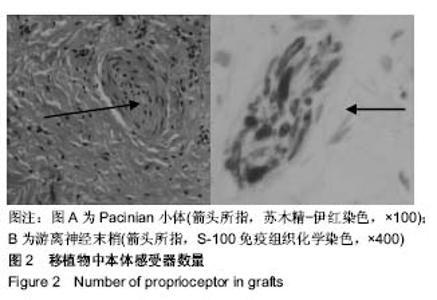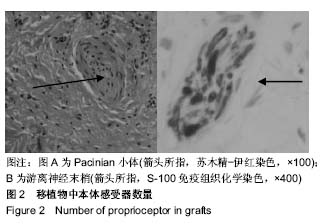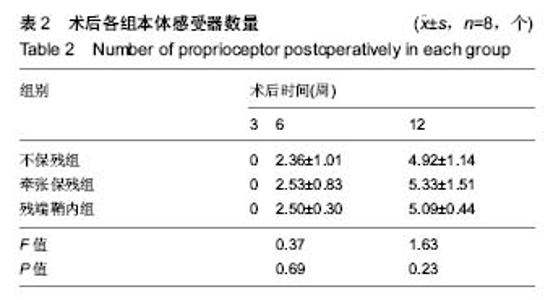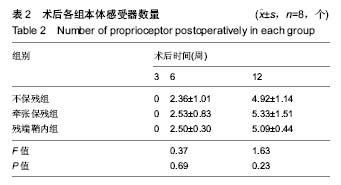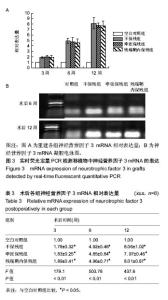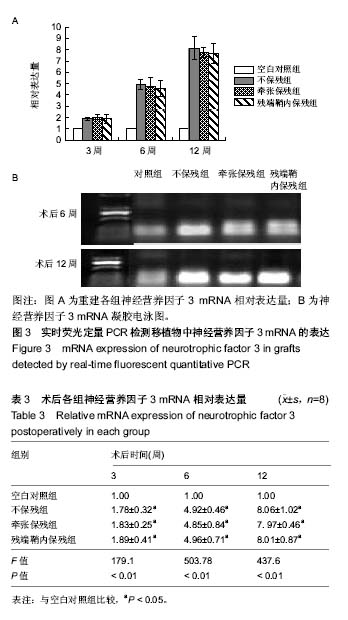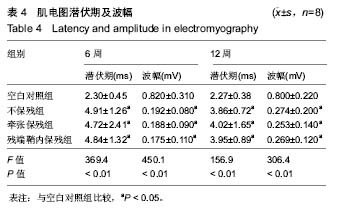| [1] Nayak M, Nag HL, Gaba S, et al. Quantitative correlation of mechanoreceptors in tibial remnant of ruptured human anterior cruciate ligament with duration of injury and its significance: an immunohistochemistry-based observational study. J Orthop Traumatol. 2018;19(1):5. [2] Kim KM, Han JK, Yi Y, et al. Proprioceptive and Knee Joint Kinematics for Comparison of Remnant Preserved versus Non-remnant Anterior Cruciate Ligament Reconstruction Using Achilles Allograft. Korean J Sports Med. 2012;30(2): 100-109[3] Annear PT, Rohr EJ, Hille DM, et al.No clinical difference in 10-year outcomes between standard and minimal graft debridement techniques in patients undergoing anterior cruciate ligament reconstruction using autologous hamstrings: a randomized controlled trial. Knee Surg Sports Traumatol Arthrosc. 2018 Sep 20.[4] 洪雷,宋关阳,李旭.保留与不保留残端重建前十字韧带的前瞻性随机对照研究[J]. 中华骨科杂志, 2015, 35(4):387-393.[5] 邓小文,赵其纯,尚希福,等.残端牵张并增强缝合修复兔急性前交叉韧带完全损伤的实验研究[J].安徽医科大学学报,2015,50(11): 1683-1686[6] 谢国明,董士奎,皇甫小桥,等. 保留胫骨残端重建前交叉韧带对韧带重塑相关基因表达的影响[J].中国修复重建外科杂志,2016, 30(1):15-20.[7] 宋关阳,张晋,李旭,等.兔前交叉韧带保残重建的生物力学研究[J].中华创伤骨科杂志,2012,14(12):1037-1041.[8] Fremerey RW,Lobenhofer P,Zeichen J,et al. Proprioception after rehabilitation and reconstruction in knees with deficiency of the anterior cruciate ligament:a prospective longitudinal study. J Bone Joint Surg Br.2000;82(6):801-806. [9] Johansson H, Sjolander P, Sojka P. Receptors in the knee joint ligaments and their role in the biomechanics of the joint. Crir Rev Biomed Eng.1991;18(5):341-368, [10] Bonfim TR, Jansen Paccola CA, Barela JA. Proprioceptive and behavior impairments in individuals with anterior cruciate ligament reconstructed knees.Arch Phys Med Rehabil.2003; 84(8):1217-1223. [11] 何川,李彦林,李晓刚.前交叉韧带保留残端重建术对膝关节本体感觉功能恢复的疗效分析[J].中国修复重建外科杂志, 2014, 28(4):442-447. [12] 代辰飞,白伦浩,高琳,等.前交叉韧带重建术后本体感觉恢复评价:股骨牵张保残法与标准方法比较[J].中国运动医学杂志, 2014, 33(1):5-9.[13] Yanagisawa S,Kimura M,Hagiwara K,et al.The remnant preservation technique reduces the amount of bone tunnel enlargement following anterior cruciate ligament reconstruction. Knee Surg Sports Traumatol Arthrosc. 2018;26(2):491-499. [14] Kim BH, Kim JI, Lee O, et al.Preservation of remnant with poor synovial coverage has no beneficial effect over remnant sacrifice in anterior cruciate ligament reconstruction. Knee Surg Sports Traumatol Arthrosc. 2018;26(8):2345-2352. [15] Naraoka T,Kimura Y,Tsuda E,et al.Is Remnant Preservation Truly Beneficial to Anterior Cruciate Ligament Reconstruction Healing? Clinical and Magnetic Resonance Imaging Evaluations of Remnant-Preserved Reconstruction. Am J Sports Med. 2017;45(5):1049-1058 [16] Bali K,Dhillon MS,Vasistha RK,et al.Efficacy of immunohistological methods in detecting functionally viable mechanoreceptors in the remnant stumps of injured anterior cruciate ligaments and its clinical importance. Knee Surg Sports Traumatol Arthrosc.2012;20(1):75-80.[17] Shimizu T,Takabashi T,Wada Y,et al.Regeneration process of mechanoreceptors in the reconstructed anterior cruciate ligament.Arch O rthop Trauma Surg.1999;l19(7-8):405-409. [18] Wada Y,Takahashi T,Michinaka Y.Mechanoreceptors of patellar tendon used for ACL reconstruction Rabbit experiments.Acta Orthop Scand.1997;68(6) :559-562.[19] Mifune Y, Ota S, Takayama K, et al.Therapeutic advantage in selective ligament augmentation for partial tears of the anterior cruciateligament: results in an animal model. Am J Sports Med.2013;41(2):365-373. [20] Song GY,Zhang J,Li X,et al. Biomechanical and Biological Findings Between Acute Anterior Cruciate Ligament Reconstruction With and Without an Augmented Remnant Repair:A Comparative in Vivo Animal Study.Arthroscopy.2016; 32(2):307-319.[21] Zhang L, Jiang K, Chai H, et al.A comparative animal study of tendon grafts healing after remnant-preserving versus conventional anterior cruciate ligament reconstruction. Med Sci Monit.2016;22:3426-3427. [22] Ba YC,Dai P ,Zhou HL,et al.Spatiotemporal Changes of NGF, BDNF and NT-3 in the Developing Spinal Cords of Embryonic Chicken. Neurochem Res.2010;35(2):273-278.[23] Xie GM, Huang Fu XQ, Zhao JZ.The Effect of Remnant Preservation on Patterns of Gene Expression in a Rabbit Model of Anterior Cruciate Ligament Reconstruction.J Surg Res. 2012;176(2):510-516.[24] Ochi M, Iwasa J, Uchio Y, et al. The regeneration of sensory neurons in the reconstruction of the anterior cruciate ligament. J Bone Joint Surg Br.1999;81(5):902-906.[25] Biedert RM,Zwick EB. Ligament-muscle reflex arc after anterior cruciate ligament reconstruction:electromyographic evaluation. Arch Orthop Trauma Surg. 1998;118(1-2):81-84.[26] Iwasa J, Ochi M, Uchio Y, et al. Decrease in anterior knee laxity by electrical stimulation of normal and reconstructed anterior cruciate ligaments. J Bone Joint Surg Br.2006;88(4): 477-483.[27] Krogsgaard MR, Fischer-Rasmussen T, Dyhre-Poulsen P. Absence of sensory function in the reconstructed anterior cruciate ligament. J Electromyogr Kinesiol.2011;21(1):82-86. |
